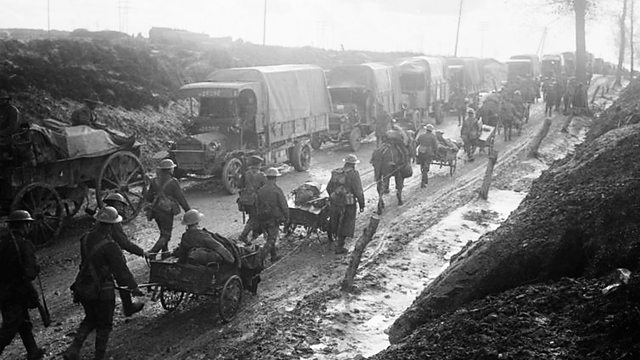Stratton on the Fosse, Somerset: The Somme Survivor
From schooldays in Somerset to survival at the Somme – the story of Terence McManus
The history of World War One resounds with stories of determination, fortitude, survival and sheer good fortune. But the experiences of Lieutenant T.J. McManus at the Battle of the Somme are more than remarkable.
Terence Joseph McManus was a pupil at Downside School in Stratton on the Fosse near Shepton Mallet between 1910 and 1915. It’s one of the country’s leading Roman Catholic boarding schools and can trace its heritage back to 17th Century France. It was founded on its site in Somerset in 1814, and a cedar tree planted near the main entrance survives as a reminder of the opening day.
Humorous, sporty and popular, McManus played rugby for the school and sang in the choir. WW1 was already underway when he left school to take up military training at Sandhurst and by May 1916 he was in France with the 2nd Battalion, Middlesex Regiment.
The nickname of the Middlesex Regiment was the ‘Die Hards’ and it’s hard to imagine a more appropriate label for Lieutenant McManus. On the first day of the Somme, 1 July 1916, he was severely injured when a large piece of shrapnel broke his right leg above the knee. Unable to move as shells and bullets swept past him, and just a short distance from the German lines, he found himself abandoned in no man’s land.
McManus was severely wounded and knew that if he escaped the attention of the German snipers nearby, there was every chance that he could bleed to death. He also risked dying from starvation and dehydration. There was no food to sustain him but he was able to reach the water bottles of his dead comrades and drank what little was left. He took a spoon from his pocket and tried sucking it to stave off his thirst. When it rained he would get soaked, but the bad weather saw an ingenious move born out of necessity. The injured man began to suck the moisture from his tunic to try to stay alive.
Officially he was declared ‘wounded and missing’ and his family must have feared the worst. But somehow, McManus had stayed alive for more than a week. On 8 July he spotted a small group of British soldiers on burial duty nearby. Unable to shout he could only attract their attention with a feeble wave of his arm. Soon he was on a stretcher and on his way to a dressing station.
He was brought back to England for treatment and although he was away from the Western Front, his battles were far from over. His wounded leg was septic and his fractured bones wouldn’t fuse. Over the next three years he was moved to and from various hospitals in Surrey, Middlesex and Sussex and he was never able to walk without the use of crutches.
After such a display of stoicism and survival in the battlefields of France, the end was tragic. In December 1919 it was decided that McManus needed an operation to unite the fractured ends of his thigh bone. His doctors had waited more than three years in the hope that the infection would have died down. They were wrong. On 23 December 1919 the septicaemia from his wound finally silenced him.
Location: Stratton on the Fosse, Somerset BA3 4RJ
Image shows men of the Middlesex Regiment returning from the trenches near Albert, 1916, courtesy of Imperial War Museums
Presented by yachtsman, Tony Bullimore
Duration:
Credits
| Role | Contributor |
|---|---|
| Unknown | Tony Bullimore |
This clip is from
Featured in...
![]()
Â鶹Éç Somerset—World War One At Home
Places in Somerset that tell a story of World War One
![]()
Memory—World War One At Home
Memorials and the commemoration of wartime lives
More clips from World War One At Home
-
![]()
The loss of HMY Iolaire
Duration: 18:52
-
![]()
Scotland, Slamannan and the Argylls
Duration: 07:55
-
![]()
Scotland Museum of Edinburgh mourning dress
Duration: 06:17
-
![]()
Scotland Montrose 'GI Brides'
Duration: 06:41







